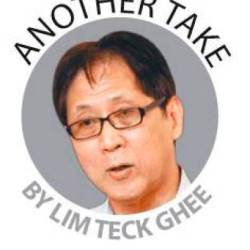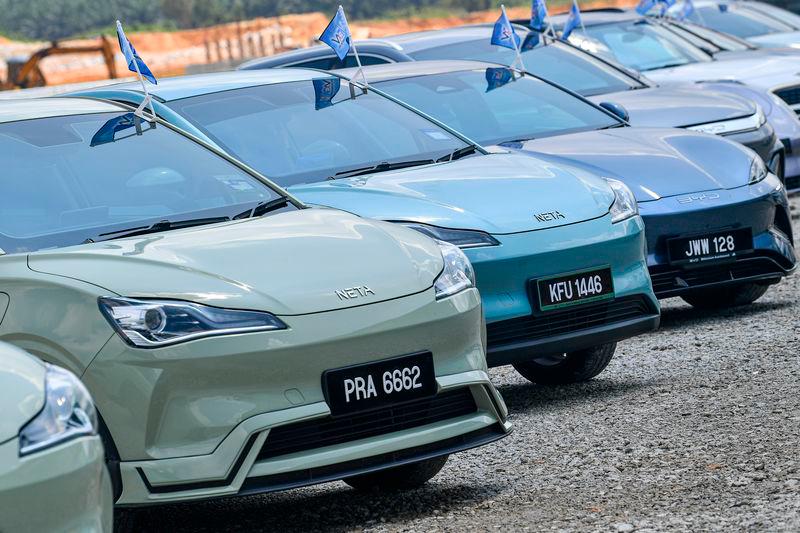CONSUMERS are finding that their purchase of a car today has become the latest economic battleground of the United States, Canada and European Union countries in their effort to take down China.
In the last 15 years, China has emerged a leader in the automotive industry. The importance of this sector is evident, as can be gauged from the fact that it is next only to the health and life insurance industry in terms of global revenue.
More critically, it leads in economic indicators such as manufacturing, employment and profitability, and plays a strategic role in the national economies of all major developed nations.
Its significance can also be seen through the industry’s contribution to the economic rise and development of Japan and South Korea while the decline of the United Kingdom car industry has been a major factor in the UK’s fall among leading manufacturing countries.
The global automobile market size in terms of revenue was worth around US$2,810.63 billion (RM12,092.83 billion) in 2022. The automobile market value is predicted to grow to around US$3,969.84 billion by 2030, with a compound annual growth rate of approximately 4.42% between 2023 and 2030. Hence, rich returns for legacy auto manufacturers and their established supply chain if electric vehicles (EVs) can be kept out of the world market.
Preparations for this battleground have already been put in place by the (Joe) Biden administration, which in mid-May imposed tariffs against a wide range of hi-tech products from China. This included 100% tariffs on EVs and 25% tariffs on EV batteries.
The US’s move, an unprecedented quadruple increase, was followed by the European Union’s announced provisional tariffs ranging from 17.4% to 38.1% on EVs imported from China in June. Canada has since followed the US and EU, with its announcement of a 100% tariff on Chinese EV imports.
Larger picture
Since its earliest development, the car industry has been dominated by what is referred to as the internal combustion engine (ICE), with power provided by petroleum as its primary source.
All stakeholders and stake players in and out of the industry have generally agreed on the recent development of electric engines, providing an alternative to ICEs, as a game changer not only for the industry but also for climate change and the creation of a less polluted and more sustainable world.
According to Earth.Org, a leading environmental news website providing coverage of crucial issues affecting our planet through independent, high-quality journalism: “If all cars on the road became electric, we could cut almost one-fifth of global emissions, but the benefits of expanding the electric sector go beyond this. Besides being able to enjoy cleaner air, we would be less dependent on conflict-fuelled spikes in oil prices and would have quieter cities.”
So why is China, the world’s leader in EVs and other areas of hi-tech and the green revolution, not lauded for its contribution to innovative transportation development and environmentally sustainable growth but being penalised?
The reasons are clear, but this will be missing to anyone reading about the subject from official sources in Washington, Brussels and Ottawa.
Firstly, it should be emphasised that the high tariffs, widely publicised in the international mass media, are being imposed by a small number of the 195 countries in the world. Even within the EU, although a dozen members voted in support of the tariffs, the majority of 15 voted against or abstained.
Secondly, the claim that China’s EV development has been an outcome of extensive subsidies, non-market practices and intentional state-directed policy of over-capacity has little or no empirical data to back it up.
Coincidentally but not unexpectedly, these claims have been reconfigured by the Western media and other anti-China interest lobbies to include China’s exploitation of cheap labour, children working in sweatshops, stealing of intellectual property rights of other countries, copycat practices, etc.
What we are seeing with these EV accusations – as with those made about the oppression of Uyghurs, the big brother omnipresence of an authoritarian CPC in repressing the Chinese population and other similar accusations – is that they have no evidence, and whatever “evidence” presented has been exposed as made up or deliberately misrepresented.
China has denounced the tariff increase as acts of protectionism and a disregard for the World Trade Organisation rules, and sounded the warning that it would undertake retaliatory measures in response.
Independent analysts have pointed out that China’s dominance of the EV industry and the larger new energy industry, including lithium batteries and photovoltaic products, has been built on technical innovation, complete industrial and supply chains, and full-on market competition. It is an outcome of creativity, efficiency and comparative advantage, and not of subsidies or other unfair trade practices.
What has also been left out from the official and media analysis is that China is the undisputed leader in industrial robot usage, and this “overcapacity” accounts for its ability to out-compete the legacy of car makers of the West and Japan.
The issue of subsidies and overcapacity now in play to prevent affordable vehicles and other Chinese products from making inroads into Western markets not only reeks of hypocrisy, the incontestable fact is that there has been no manufacturing sector of the West that has not been a recipient of subsidies provided by numerous past and current governments to advance their national industrial development and economies.
A review of recent subsidies provided by leading nations to their automotive industries revealed the following data:
→ GM – US$57 billion subsidies
→ Ford – US$40 billion subsidies
→ Stellantis – US$20 billion subsidies
→ Toyota – US$6.6 billion subsidies
→ Tesla – US$3.3 billion subsidies
→ VW – US$3.9 billion subsidies
It should be noted that practically every unfair practice that the “Gang of Three” is accusing China of in its industrial and manufacturing progress has been learned or copied from the West.
The big difference today is that much of the new industrial and manufacturing production of China is in the renewable energy sector of solar, wind and electric vehicle technology that the world and especially Western consumers need for a cleaner and more sustainable world.
Lim Teck Ghee’s Another Take is aimed at demystifying social orthodoxy.
Comments: letters@thesundaily.com










